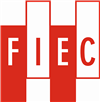What should you know about the EU’s new reporting rules?
19 December 2022
At the end of June, the Member States and the European Parliament reached an agreement on the Corporate Sustainability Reporting Directive (CSRD). Expected to enter into force in 2023, it may well herald a new era in sustainability reporting for (construction) companies.

Since its 2018 Action Plan on Financing Sustainable Growth, the EU has embarked on an ambitious path of reorienting capital flows toward a sustainable economy, and it has introduced far-reaching legislation, such as the EU Taxonomy Regulation. This first-of-its-kind classification system – still under development – provides for clear definitions of what economic activity can be considered as “sustainable”.
The taxonomy also requires certain undertakings – whether financial or non-financial – within scope of the EU’s existing reporting rules to report the proportion of their turnover, capital expenditure (Capex) and operational expenditure (Opex) that is “Taxonomy-eligible” (Taxonomy relevant) since 2022. As of 1st January 2023, all non-financial corporates will have to report the proportion of their turnover, Capex and Opex that is “Taxonomy-aligned” (meaning all economic activities that substantially contribute to one of the EU taxonomy’s environmental objectives and doing no harm to any other, while also being in compliance with minimum social safeguards). This is where the Corporate Sustainability Reporting Directive comes in: Companies in scope will have to report the abovementioned indicators alongside other sustainability information mandated by the new CSRD.
While only listed companies, banks, and insurance companies– so-called public interest entities – with more than 500 employees were obliged to report under the existing Non-Financial Reporting Directive (NFRD) -, the CSRD will now ensure that a lot more companies report sustainability information. 50,000 companies would be within scope – compared to 11,000 under the NFRD.
Here are five points that construction companies should know about the CSRD.
1. All large undertakings, whether listed or non-listed, as well as SMEs listed on regulated markets will be covered by the CSRD, except micro-undertakings.
Large undertakings, SMEs and micro-undertakings are defined in the 2013 Accounting Directive, according to which undertakings that are public-interest entities exceeding on their balance sheet dates the criterion of the average number of 500 employees during the financial year and undertakings exceeding at least two of the three following criteria qualify as “large”: A balance sheet total of 20 million, a net turnover of 40 million and an average number of employees of 250.
Small and medium-sized undertakings which are not micro-undertakings are defined as entities that do not exceed the limits of at least two of the following criteria: A balance sheet total of between 4 and 20 million, a net turnover of between 8 or 40 million, and a number of employees of between 50 or 250 during the financial year.
The CSRD will also apply to parent undertakings that exceed at least two of the three criteria on the balance sheet date of the parent undertaking: A balance sheet total of 20 million, a net turnover of 40 million, and an average number of employees of 250.
Last but not least, the new reporting rules will also cover non-EU companies with “substantial activity in the EU market”.
2. Companies will have to report according to new mandatory EU sustainability reporting standards.
The European Financial Reporting Advisory Group (EFRAG), a private association advising the Commission on the adoption of international financial reporting standards into EU law, is responsible for developing these draft standards, which will be adopted by the Commission in 2023 and 2024. They will require detailed corporate reporting on a broad range of environmental, social and governance issues, including information on scope 1, scope 2 and, where relevant, scope 3 greenhouse gas emissions, meaning that companies could be required to report about risks in their supply chain. In addition, EFRAG will develop sector-specific and SME-proportionate standards.
3. The sustainability information must be ‘digitally tagged’.
Companies will need to report sustainability information in a dedicated section of the management report rather than in a separate report. They will also need to ‘digitally tag’ sustainability information, meaning it must be provided in a single electronic reporting format so that it can feed into a central EU platform for financial and non-financial information.
4. The CSRD imposes an audit requirement for reporting.
Businesses will be required to seek third-party assurance of sustainability data. As a first step, the CSRD makes the “limited assurance” of sustainability information by a statutory auditor mandatory, with the end goal to move to reasonable assurance in the longer term.
5. The CSRD’s application will be phased in gradually.
Large companies already covered by the existing rules will have to report in 2025 based on the financial year 2024 information. “Other large” undertakings will have to report in 2026 based on the financial year 2025 information, whereas listed SMEs which are not micro-undertakings are required to report in 2027 based on the financial year 2026 information but can opt-out from the reporting obligations until 2029 and will benefit from simplified procedures. Non-EU companies in scope are required to report in 2029 based on the financial year 2028 information.




